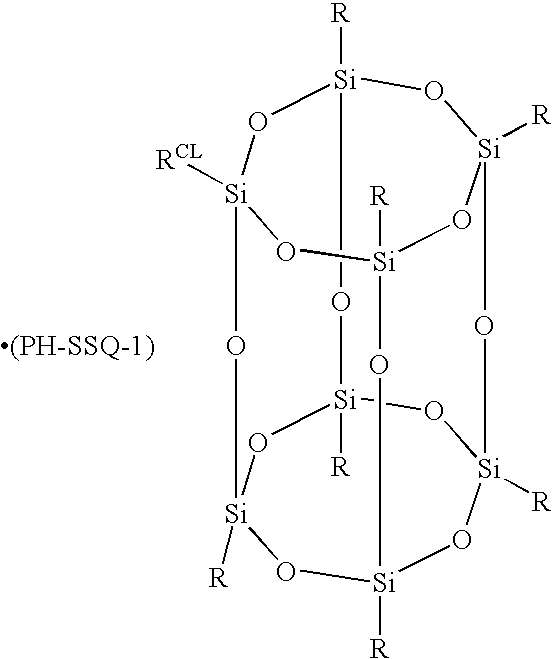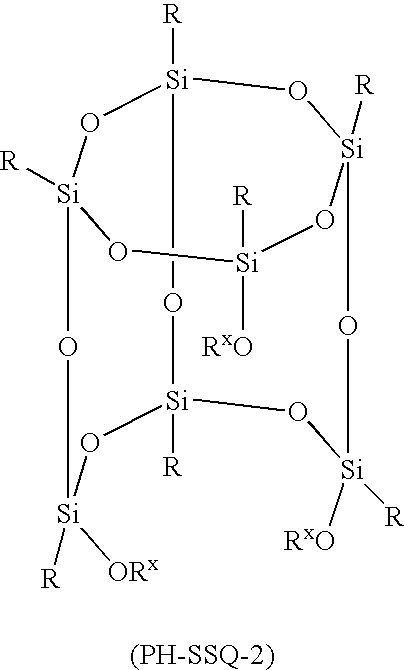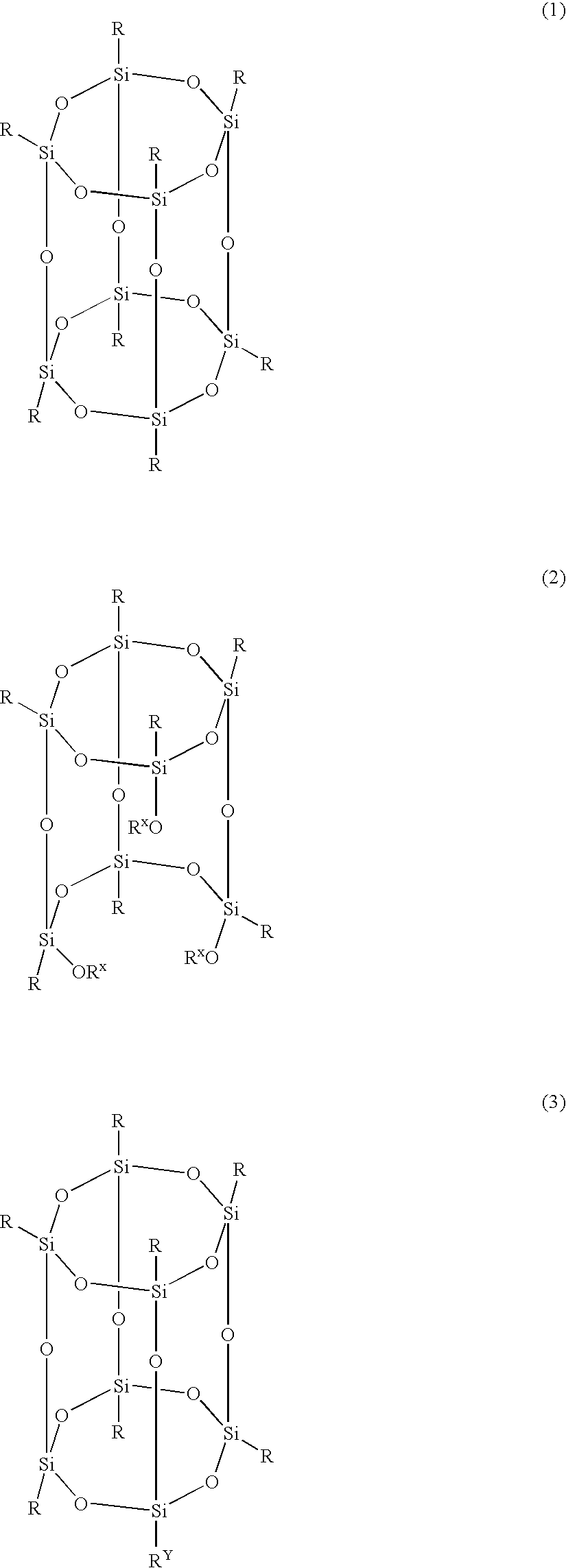Molecular photoresists containing nonpolymeric silsesquioxanes
a technology of lithographic and silsesquioxanes, which is applied in the field of photolithography, can solve the problems of unsuitability of phenolic polymers used for 248 nm imaging, affecting the development of photoresists based on these materials, and difficult to incorporate uniform dissolution properties into new photoresist materials, so as to achieve low activation energy and increase image resolution
- Summary
- Abstract
- Description
- Claims
- Application Information
AI Technical Summary
Benefits of technology
Problems solved by technology
Method used
Image
Examples
example 1
Synthesis of Acid-Cleavable Compound 1A
[0106] Compound 1A, having the structure (1) wherein R is
was synthesized as follows:
[0107] Octakis(dimethylsilyloxy)silsesquioxane (Q8M8H)(5.08 g, 0.005 mole), 2-tert-butyl tetracyclo[4.4.0.12,5.17,12]dodec-3-ene-5-carboxylate(TD-TBE) (11.44 g, 0.044 mole), and hexane (50 ml) were placed in a round bottom flask equipped with a magnetic stirrer, nitrogen inlet, and a water condensor. Platinum(0)-1,3-divinyl-1,1,3,3-tetramethyldisiloxane complex in xylene (1 ml) was added to this mixture and stirred at room temperature for 6 hours. Analysis of the IR spectrum of the reaction product indicated the reaction was complete. The solution was added dropwise into 500 ml methanol. The product coagulated and was rinsed twice with methanol (30 ml) and dried under vacuum at 70° C., yielding 8.07 g of final product.
example 2
Synthesis of Acid-Cleavable Compound 1B
[0108] The method of Example 1 can be repeated using octakis(dimethylsilyloxy)-silsesquioxane (Q8M8H), 2-tetrahydropyranyl[4.4.0.12,5.17,12]dodec-3-ene-5-carboxylate to synthesize Compound 1B, having the structure (1) wherein R is
example 3
Synthesis of Acid-Cleavable Compound 1C
[0109] Compound 1C, having the structure (1) wherein R is
was synthesized as follows:
[0110] A. Synthesis of N-(2-Tetrahydro-2H-pyran-2-yloxy)-5-norbornene-2,3-dicarboximide:
[0111] To a 250 ml 3-neck round bottom flask equipped with condenser, thermometer, a nitrogen inlet and a magnetic stirrer bar was added N-Hydroxy-5-norbornene-2,3-dicarboximide (17.9 g, 0.10 mole), dihydropyran, (9.47 g, 0.11 mole) and 100 ml anhydrous THF. The mixture was stirred for ½ hour and a catalytic amount of triflouroacetic acid was added. The reaction solution was stirred at room temperature for 12 hours. Next, 10 g of basic Al2O3 was added and the mixture was stirred for 6 hours before filtration. A white solid was recovered following rotary evaporation of the solvent. The solid was dried in a vacuum oven at 50° C. overnight, yielding 99% final product. The identity of the product was analyzed with IR and C13 NMR.
[0112] B. Synthesis of Compound 1C: To a 250...
PUM
 Login to View More
Login to View More Abstract
Description
Claims
Application Information
 Login to View More
Login to View More - R&D
- Intellectual Property
- Life Sciences
- Materials
- Tech Scout
- Unparalleled Data Quality
- Higher Quality Content
- 60% Fewer Hallucinations
Browse by: Latest US Patents, China's latest patents, Technical Efficacy Thesaurus, Application Domain, Technology Topic, Popular Technical Reports.
© 2025 PatSnap. All rights reserved.Legal|Privacy policy|Modern Slavery Act Transparency Statement|Sitemap|About US| Contact US: help@patsnap.com



